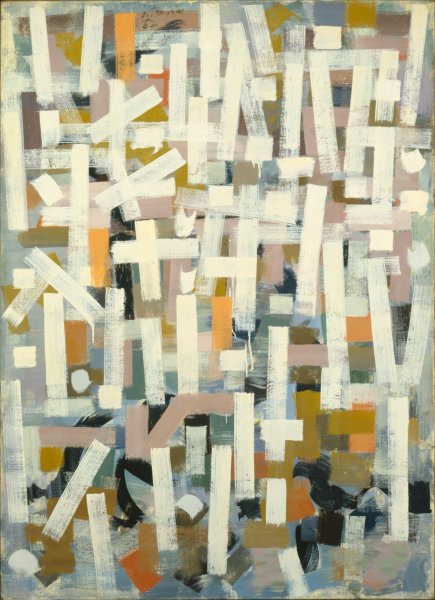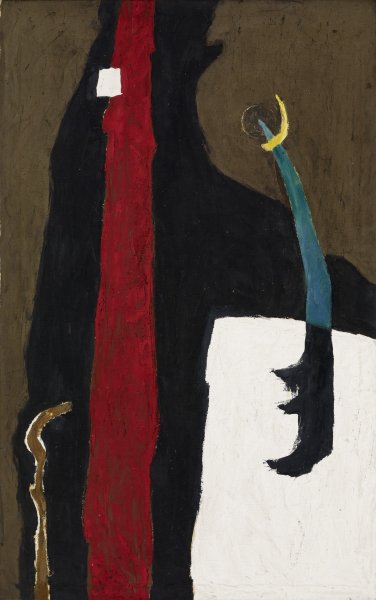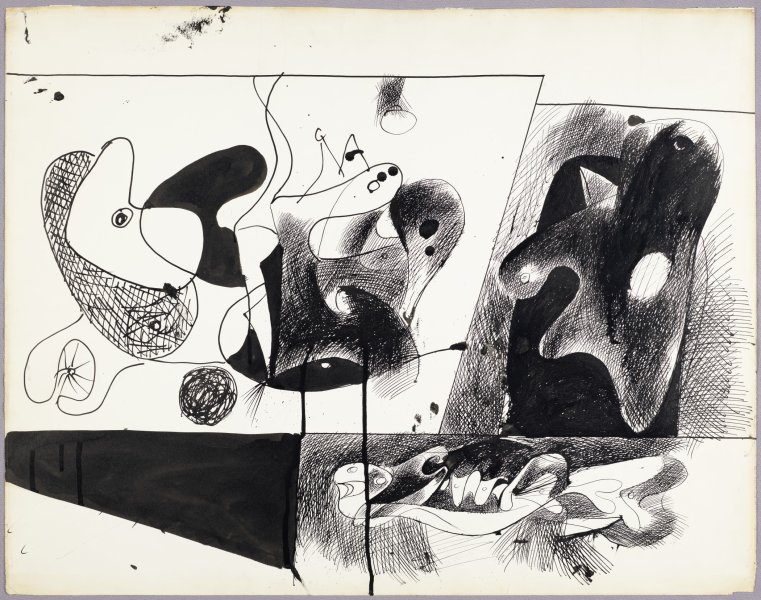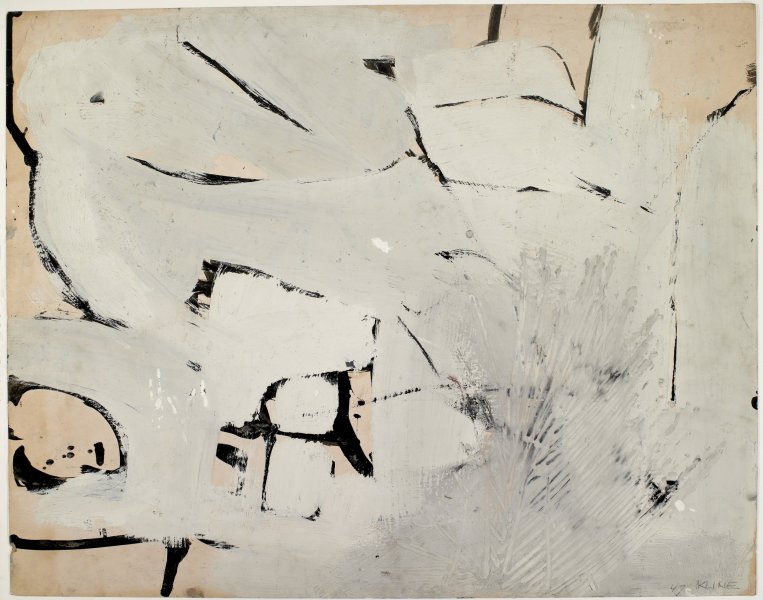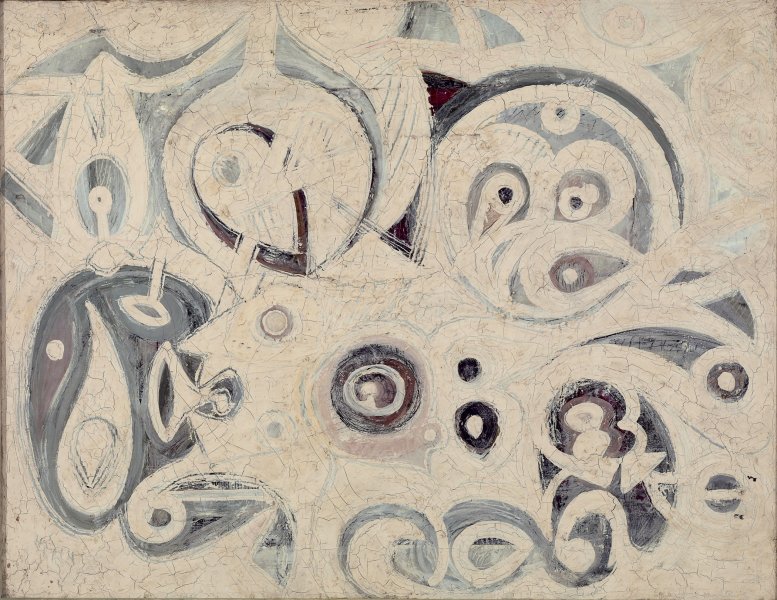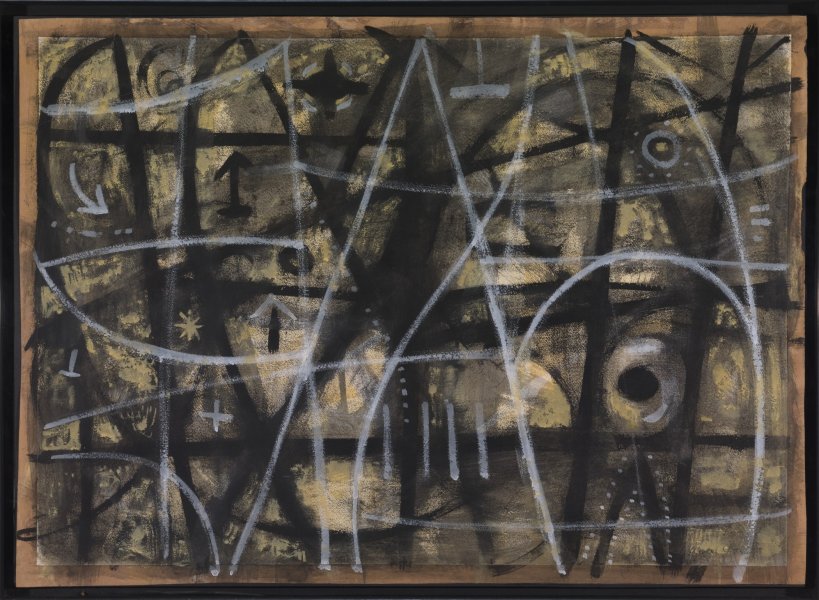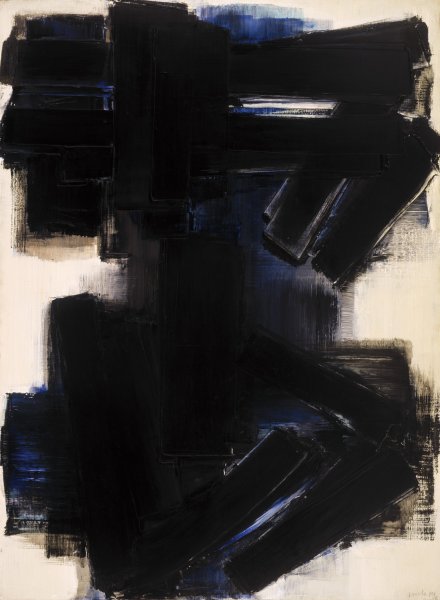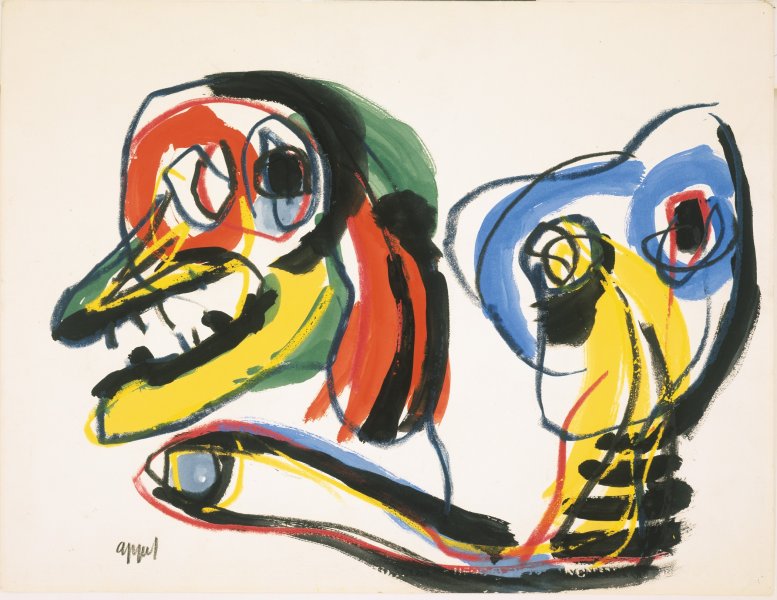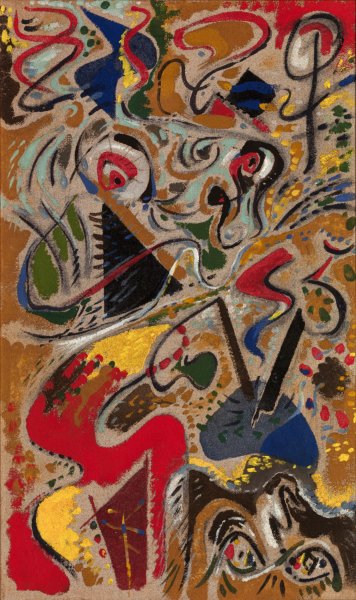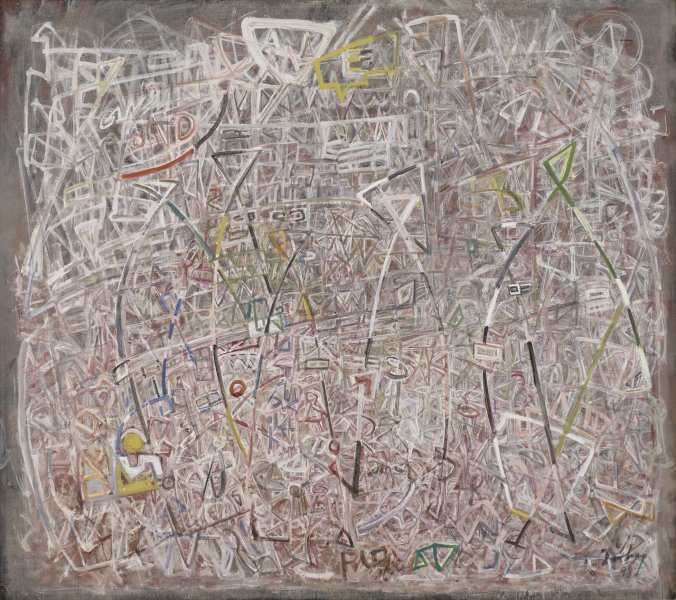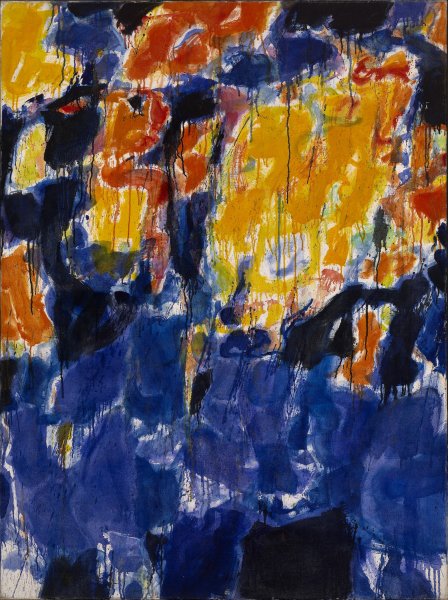The Automatiste Revolution: Montreal 1941–1960
Friday, March 19, 2010–Sunday, May 30, 2010
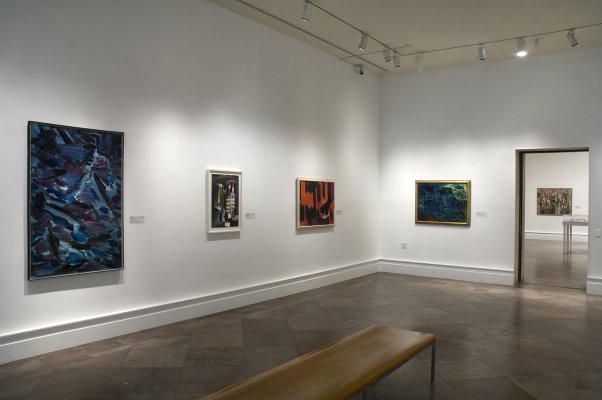
Installation view of The Automatiste Revolution: Montreal 1941–1960. Photograph by Tom Loonan.
1905 Building
Guest curated by Roald Nasgaard, Professor of Art History at Florida State University, this exhibition included 60 works of art, as well as photographs, books, and other ephemera documenting the history of the Automatiste, Canada’s first truly avant-garde art movement. Organized by the Varley Art Gallery in Unionville, Ontario, this landmark exhibition represented the first extensive retrospective of the work of this group of Canadian abstract artists to be shown in the United States.
The Automatistes were the first artists to bring modernist painting to Canada and the first Canadian artists to embrace avant-garde gestural abstraction. Gathered under the leadership of Paul-Émile Borduas in the early 1940s, they were inspired by stream-of-consciousness writings of the time and approached their works through an exploration of the subconscious.
They published Refus global (Total Refusal) in 1948 and it became one of the pillars of the Quiet Revolution, a period of intense change in Quebec. Refus global was an anti-religious and anti-establishment manifesto—one of the most controversial artistic and social documents in modern Quebec.
The Automatistes were not solely painters, but also included dancers, playwrights, poets, critics, and choreographers. After 20 years of challenging the politically and religiously repressive Quebec society, the Automatiste group disbanded in 1960 after the death of Borduas.
In Buffalo, the exhibition was contextualized by an installation, also organized by Roald Nasgaard, of works from the Albright-Knox’s collection designed to illuminate the connections and relationships between these Canadian artists and their European and American counterparts, including the United States avant-garde and the Abstract Expressionists. The opening at the Albright-Knox was the first time this important work was seen in a broader international context.
This exhibition was organized by the Varley Art Gallery in Unionville, Ontario, with guest curator Roald Nasgaard, Professor of Art History at Florida State University.
Program Sponsors
The exhibition and publication was supported by the Varley-McKay Art Foundation and private donors.
The exhibition was made possible in Western New York through the generous support of Roche & Co., LTD; Hodgson Russ LLP; Rogers Communications Inc.; and François Rochon.
The exhibition preview and patron dinner was made possible with support from the Consulate General of Canada in Buffalo and the Délégation générale du Québec, New York.
La première de l'exposition et le dîner des mécènes furent possible grâce au soutien du Consulat général du Canada à Buffalo et la Délégation générale du Québec, New York.
The exhibition and publication was supported by the Varley-McKay Art Foundation and private donors.
The exhibition was made possible in Western New York through the generous support of Roche & Co., LTD; Hodgson Russ LLP; Rogers Communications Inc.; and François Rochon.
The exhibition preview and patron dinner was made possible with support from the Consulate General of Canada in Buffalo and the Délégation générale du Québec, New York.
La première de l'exposition et le dîner des mécènes furent possible grâce au soutien du Consulat général du Canada à Buffalo et la Délégation générale du Québec, New York.



